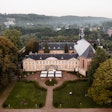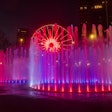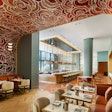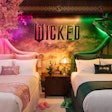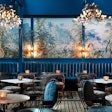It's getting harder and harder to carve out a distinctive profile in the jam-packed jeans business, which is crowded enough to have kept even a premium European brand like G-Star Raw Denim on its toes during its recent foray into the U.S. market. That's not to say that all premium denim is created equal: The Amsterdam-based company prides itself on its fine craftsmanship and willingness to take creative risks. So since it's a given that you're judged by the company you keep, G-Star recruited kindred spirit and artist/actor Dennis Hopper to help it design its coming-out party in Los Angeles on Wednesday evening. (Hopper had also worked with the brand on a fashion show in New York during Fashion Week in February.)
The event concept created by Shubhankar Ray, G-Star's global brand director, consists of art-and-music-filled evenings the company calls "Raw Nights." The first two were held in Tokyo, where music took center stage in evenings curated by Japanese photographer Hiromix and Duran Duran. For Los Angeles, G-Star put the emphasis on art and brought in Hopper to provide it. The event, held in the parking lot of the company's Beverly Hills showroom, turned into a Hopper family affair, with daughter Marin working with Ray to produce the evening and son Henry providing the punk-inspired art installation—a huge pile of garbage (which included playing cards, broken grocery carts, and Pepsi crates) at one end of the party space. Ray liked it for its incongruity, calling it “forbidden”: “You wouldn't have a pile of rubbish in a car park in Beverly Hills, where people are drinking champagne.”Nearby, Samantha Ronson spun a punk-flavored mix while BFF Lindsay Lohan hovered by her booth. On the building's exterior walls hung several large paintings from Hopper's collection based on his black-and-white photos from the '60s; he had commissioned billboard painters to turn them into oil on canvas.
Even more compelling were T-shirts made from a 40-year-old Hopper photo that showed a billboard image of a black man with large ears. The image of his face had eroded to reveal the billboard below. Ray put the image on tees with the word “elect” above the photo and covered two walls with them in an eleventh-hour inspiration. The shirts, which guests read as images of Barack Obama, were so popular that guests tore them from the walls at the end of the party.
“We took an old photo of Dennis's and recontextualized it so that it has meaning that's relevant today,” Ray said. “It shows the power of change of context. We looked at it and said, 'This is bloody great.'”
Other design elements included a display of G-Star design experiments not intended for sale—uniforms inspired by marching bands and military wear—and a European's idea of the quintessential L.A. object: a vintage white Cadillac convertible. The party drew 750 scenesters—more than double the expected turnout—but servers still managed to keep a steady supply of fries and sliders circulating among the guests.
The event concept created by Shubhankar Ray, G-Star's global brand director, consists of art-and-music-filled evenings the company calls "Raw Nights." The first two were held in Tokyo, where music took center stage in evenings curated by Japanese photographer Hiromix and Duran Duran. For Los Angeles, G-Star put the emphasis on art and brought in Hopper to provide it. The event, held in the parking lot of the company's Beverly Hills showroom, turned into a Hopper family affair, with daughter Marin working with Ray to produce the evening and son Henry providing the punk-inspired art installation—a huge pile of garbage (which included playing cards, broken grocery carts, and Pepsi crates) at one end of the party space. Ray liked it for its incongruity, calling it “forbidden”: “You wouldn't have a pile of rubbish in a car park in Beverly Hills, where people are drinking champagne.”Nearby, Samantha Ronson spun a punk-flavored mix while BFF Lindsay Lohan hovered by her booth. On the building's exterior walls hung several large paintings from Hopper's collection based on his black-and-white photos from the '60s; he had commissioned billboard painters to turn them into oil on canvas.
Even more compelling were T-shirts made from a 40-year-old Hopper photo that showed a billboard image of a black man with large ears. The image of his face had eroded to reveal the billboard below. Ray put the image on tees with the word “elect” above the photo and covered two walls with them in an eleventh-hour inspiration. The shirts, which guests read as images of Barack Obama, were so popular that guests tore them from the walls at the end of the party.
“We took an old photo of Dennis's and recontextualized it so that it has meaning that's relevant today,” Ray said. “It shows the power of change of context. We looked at it and said, 'This is bloody great.'”
Other design elements included a display of G-Star design experiments not intended for sale—uniforms inspired by marching bands and military wear—and a European's idea of the quintessential L.A. object: a vintage white Cadillac convertible. The party drew 750 scenesters—more than double the expected turnout—but servers still managed to keep a steady supply of fries and sliders circulating among the guests.

G-Star's arty L.A. party
Photo: Tyler Boye
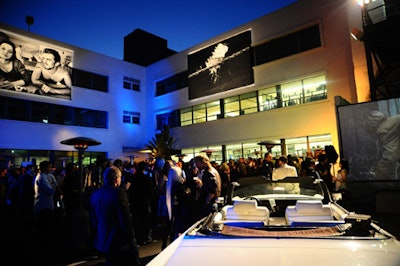
Guests mingled near a white Cadillac from Dennis Hopper's personal collection.
Photo: Tyler Boye
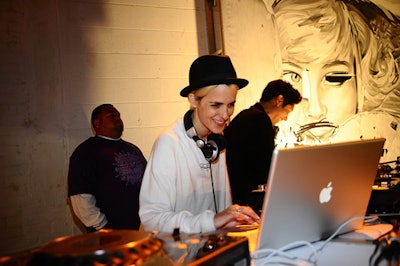
Samantha Ronson spun for the crowd.
Photo: Tyler Boye
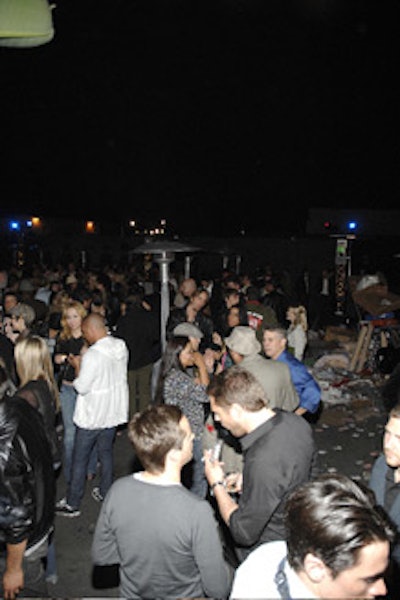
The party drew 750 scenesters, double the expected turnout.
Photo: Patrick McMullan
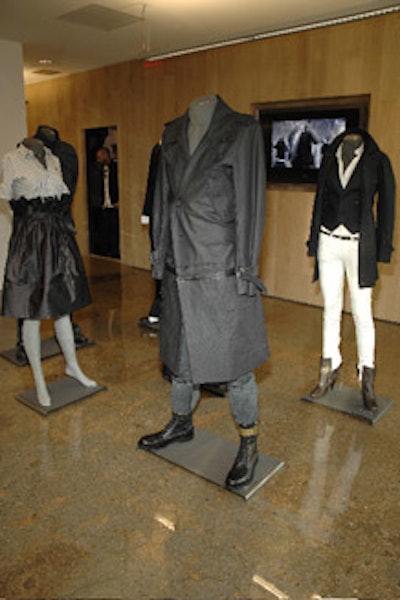
G-Star displayed its wares.
Photo: Patrick McMullan

G-Star's showroom was open for guests to check out.
Photo: Patrick McMullan













